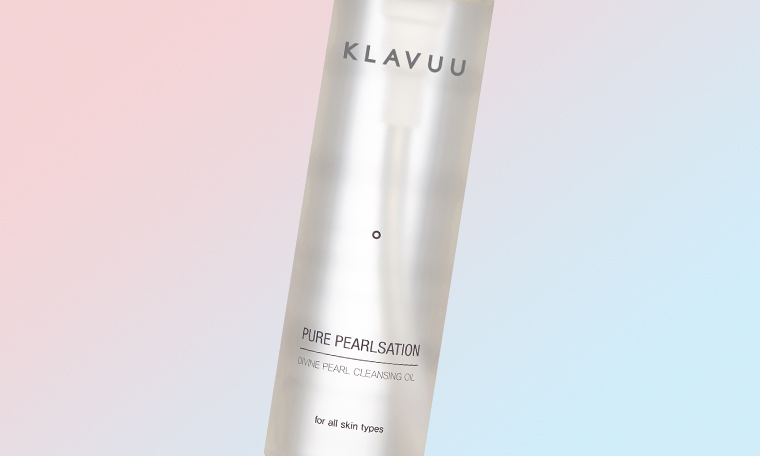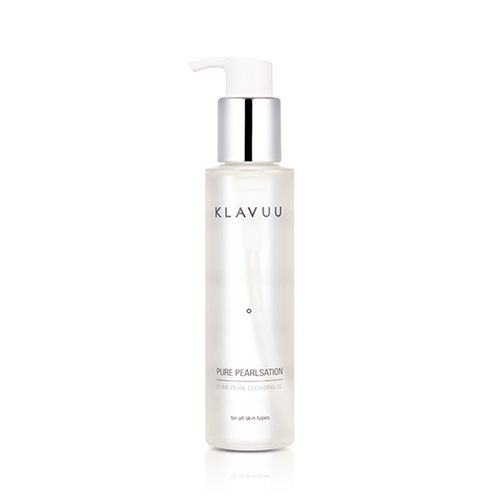The Klavuu Pure Pearlsation Divine Pearl Cleansing Oil has what we can call a “smart formula.” Not only it is gentle enough to dry and sensitive skin, it also doesn’t require much product to get the job very well done—did I hear bank accounts saying “thanks?” Yeah, I thought so…
I know, saying that everyone will love the new Klavuu Pure Pearlsation Divine Pearl Cleansing Oil is something you’re probably rolling your eyes at right now, but I swear, it’s the truth. As a beauty editor for the past four years, I’ve tried a lot of cleansing oils, and out of the probably 20 I’ve tested, there’s only a few that stay in heavy rotation.
You may think most oil cleansers are basically all the same thing…oil. But you would be wrong. Each brand has its own formula, consistency, and leaves your skin feeling different ways. And I can safely say that this new Klavuu cleansing oil is pretty much perfect for every person out there.
How It Feels When You Use It
Let’s start from the beginning of the process of using the Klavuu oil cleanser. All you need is one (!) pump to sufficiently cover your face. That is reason enough for why the whole world will fall in love with this cleanser. Many of the other oil cleansers I’ve used have taken me about four pumps to get the oil to completely cover my face and feel like it’s actually doing something. With just one pump, the Klavuu cleanser gives you full coverage (if you’re using it to take off your makeup, I would use two pumps).

This oil-based cleanser also feels so smooth when you rub it on your face. It’s thin but also substantial, and it easily spreads across your face. Once you get to the second step of oil cleanser (where you mix it with warm water), it easily emulsifies and turns into a light froth that’s perfect for deep cleaning.
The Formula
It’s one thing for an oil cleanser to feel great, but when it all comes down to it, it’s the ingredients in the cleanser that make all the difference. Klavuu is one of the newer Korean skin care brands, and it’s getting huge amounts of buzz because it uses actual pearl extracts in its products. Why pearls? Apparently, pearls have been used in Korean skin care for a long time to hydrate and brighten skin. I’m not entirely sure how Klavuu breaks pearls down to get pearl extract into this silky-smooth oil cleanser, but I’m not mad at it. Along with pearls, the cleanser contains a bunch of naturally-derived oils, like jojoba seed oil and macadamia seed oil, which give it a seriously divine scent.

Speaking of scent, the fragrance mix of vanilla and macadamia nut is another reason I believe the Klavuu oil cleanser is something everyone will love (unless you absolutely hate the smell of vanilla, and if so, that’s unfortunate for many reasons). The scent isn’t overpowering but it’s also not meek. The best way I can describe the smell is like this: You walk into a really great bakery and you smell freshly baked lightly-flavored vanilla cake and it instantly soothes you. Sounds great, right?
How Skin Feels After Using This Cleanser
A good cleansing oil should leave your skin feeling super clean. But a really great cleansing oil leaves your skin feeling both clean and soft. My face gets dry really easily so I only use a foaming cleanser after my oil cleanser a few times a week. On the days when I don’t, I usually have to immediately spritz my face with a hydrating face mist to prevent that tight, crackly feeling that comes after washing your face. Well, I’m happy to report that the Klavuu cleansing oil doesn’t require any post hydration fixes and my pores looked visibly cleaner. Put simply, the Klavuu cleanser does what all good oil cleansers should: clean your face well (and take off your makeup easily), smell great, and leave your face refreshed without feeling tight and constricted.















